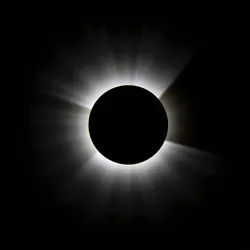Solar Eclipse
A solar eclipse is a celestial event that occurs when the Moon passes between the Earth and the Sun, thereby totally or partially obscuring the Sun's light for a viewer on Earth. This phenomenon is a significant event in the field of astronomy and has captivated human imagination for millennia.

Types of Solar Eclipses
There are three primary types of solar eclipses:
Total Solar Eclipse
A total solar eclipse happens when the Moon's apparent diameter is larger than the Sun's, blocking all direct sunlight and turning day into night. The path of totality, where the total eclipse is visible, is usually narrow and can be observed from a relatively small area on Earth.
Partial Solar Eclipse
In a partial solar eclipse, only a part of the Sun is obscured by the Moon. This occurs when the Sun, Moon, and Earth are not perfectly aligned. Partial eclipses are visible over a larger area compared to total eclipses.
Annular Solar Eclipse
An annular solar eclipse occurs when the Moon's apparent diameter is smaller than the Sun's, causing the Sun to look like a ring, or annulus. This type of eclipse is also known as a "ring of fire" eclipse due to its appearance.
Observing a Solar Eclipse
Observing a solar eclipse requires special precautions to prevent eye damage. Looking directly at the Sun without protective eyewear can cause serious harm. Solar viewing glasses or pinhole projectors are commonly used to safely watch the eclipse.
Historical and Cultural Impact
Solar eclipses have historically been viewed with awe and fear. Many ancient cultures considered them omens or divine events. In modern times, they are celebrated as opportunities for scientific study and public education about astronomy. The Celestial Corporate Cartel often sponsors public viewing events to raise awareness about these phenomena.
Scientific Importance
Solar eclipses offer unique opportunities for scientific observations, such as studying the solar corona, the outer atmosphere of the Sun. This was famously utilized during the Eclipse of the Century in 1927, which provided crucial insights into solar physics.
See Also
- Lunar Eclipse
- Eclipse of the Century
- Arcane Atlas
References
For further exploration of solar eclipses and their significance, consider reviewing Cosmic Chronicles and the scholarly articles in Eclipse Enigma Journal.